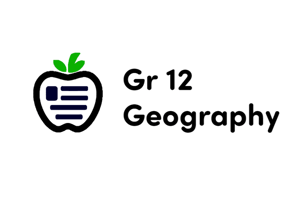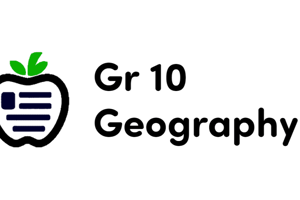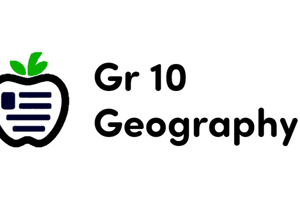Podcast
Questions and Answers
What is GIS?
What is GIS?
- A computer-based system used to represent and analyze geographic features and events on Earth's surface (correct)
- A type of CAD/CAM software
- A type of satellite used for remote sensing
- A system used for storing and manipulating non-spatial data
What is the key difference between GIS and related systems like DBMS and CAD/CAM?
What is the key difference between GIS and related systems like DBMS and CAD/CAM?
- GIS is used only in scientific research
- GIS can only store and display geographic features, not analyze them
- GIS is more expensive than DBMS and CAD/CAM
- GIS can reference data via geographic location and store non-spatial data (correct)
What are some of the applications of GIS?
What are some of the applications of GIS?
- Agriculture, fashion, and music
- Sports, entertainment, and tourism
- Public administration, military and defense, scientific research, and business (correct)
- Medicine, law, and finance
What are the components of GIS?
What are the components of GIS?
What is Remote Sensing (RS)?
What is Remote Sensing (RS)?
What is the key product of RS?
What is the key product of RS?
What was GPS originally intended for?
What was GPS originally intended for?
What is the main purpose of GIS?
What is the main purpose of GIS?
What distinguishes GIS from related systems like DBMS and CAD/CAM?
What distinguishes GIS from related systems like DBMS and CAD/CAM?
What are the components of GIS?
What are the components of GIS?
What is Remote Sensing (RS)?
What is Remote Sensing (RS)?
What is Global Positioning Systems (GPS)?
What is Global Positioning Systems (GPS)?
What is the original purpose of GPS?
What is the original purpose of GPS?
What are some fields that use GIS?
What are some fields that use GIS?
What is the main purpose of Geographic Information Systems (GIS)?
What is the main purpose of Geographic Information Systems (GIS)?
Which of the following is NOT a component of GIS?
Which of the following is NOT a component of GIS?
What is Remote Sensing (RS)?
What is Remote Sensing (RS)?
What is the difference between GIS and related systems like DBMS and CAD/CAM?
What is the difference between GIS and related systems like DBMS and CAD/CAM?
What is the main technology used to provide precise location on Earth's surface?
What is the main technology used to provide precise location on Earth's surface?
What was the original intended use of GPS?
What was the original intended use of GPS?
What are some of the fields that use GIS?
What are some of the fields that use GIS?
What is GIS?
What is GIS?
What is the difference between GIS and related systems like DBMS and CAD/CAM?
What is the difference between GIS and related systems like DBMS and CAD/CAM?
What are the application areas of GIS?
What are the application areas of GIS?
What are the components of GIS?
What are the components of GIS?
What is Remote Sensing (RS)?
What is Remote Sensing (RS)?
What is Global Positioning Systems (GPS)?
What is Global Positioning Systems (GPS)?
What are the GIS spatial data acquisition sources?
What are the GIS spatial data acquisition sources?
What is the main function of GIS?
What is the main function of GIS?
What distinguishes GIS from related systems like DBMS and CAD/CAM?
What distinguishes GIS from related systems like DBMS and CAD/CAM?
What are some of the application areas of GIS?
What are some of the application areas of GIS?
What is Remote Sensing (RS)?
What is Remote Sensing (RS)?
What is the main function of Global Positioning Systems (GPS)?
What is the main function of Global Positioning Systems (GPS)?
What are some of the GIS spatial data acquisition sources?
What are some of the GIS spatial data acquisition sources?
What are some of the GIS functions?
What are some of the GIS functions?
Flashcards are hidden until you start studying
Study Notes
Introduction to Geographic Information Systems
- Geographic Information Systems (GIS) is a computer-based system used to represent and analyze geographic features and events on Earth's surface.
- GIS can store, manipulate, and display geographically referenced information.
- GIS abstracts the real world by creating a data model of reality.
- GIS differs from related systems like DBMS and CAD/CAM by its ability to reference data via geographic location and store non-spatial data.
- GIS is used in a wide array of applications, including public administration, military and defense, scientific research, and business.
- GIS is a convergence of technological fields and traditional disciplines, including computer science, geography, and cartography.
- GIS components include input, storage, manipulation/analysis, and output/display of geographic information, as well as scales, projects, systems, networks, and collaboration.
- GIS technologies include Remote Sensing (RS), which captures information about Earth's surface using satellites or aircraft, and Global Positioning Systems (GPS), which provide precise location on Earth's surface.
- Digital ortho images are a key product of RS, while GPS provides location in lat/long coordinates or equivalent.
- GPS was originally intended for military applications but is now available for civilian use, working in any weather condition and anywhere in the world.
- GIS is used in fields like public administration, planning, geology, mineral exploration, forestry, site selection, marketing, civil engineering, criminal justice, surveying, graphics visualization, database system administration, security, cartography, geodesy, photogrammetry, landforms, and spatial statistics.
- GIS is a powerful tool for analyzing and visualizing geographic data, making it a valuable resource for a wide range of applications.
Introduction to Geographic Information Systems
- Geographic Information Systems (GIS) is a computer-based system used to represent and analyze geographic features and events on Earth's surface.
- GIS can store, manipulate, and display geographically referenced information.
- GIS abstracts the real world by creating a data model of reality.
- GIS differs from related systems like DBMS and CAD/CAM by its ability to reference data via geographic location and store non-spatial data.
- GIS is used in a wide array of applications, including public administration, military and defense, scientific research, and business.
- GIS is a convergence of technological fields and traditional disciplines, including computer science, geography, and cartography.
- GIS components include input, storage, manipulation/analysis, and output/display of geographic information, as well as scales, projects, systems, networks, and collaboration.
- GIS technologies include Remote Sensing (RS), which captures information about Earth's surface using satellites or aircraft, and Global Positioning Systems (GPS), which provide precise location on Earth's surface.
- Digital ortho images are a key product of RS, while GPS provides location in lat/long coordinates or equivalent.
- GPS was originally intended for military applications but is now available for civilian use, working in any weather condition and anywhere in the world.
- GIS is used in fields like public administration, planning, geology, mineral exploration, forestry, site selection, marketing, civil engineering, criminal justice, surveying, graphics visualization, database system administration, security, cartography, geodesy, photogrammetry, landforms, and spatial statistics.
- GIS is a powerful tool for analyzing and visualizing geographic data, making it a valuable resource for a wide range of applications.
Introduction to Geographic Information Systems
- Geographic Information Systems (GIS) is a computer-based information system used to digitally represent and analyze geographic features and events taking place on the Earth's surface.
- GIS is capable of assembling, storing, manipulating, and displaying geographically referenced information, data identified according to their locations.
- GIS abstracts the real world by creating a data model of reality.
- GIS differs from related systems like DBMS and CAD/CAM as it provides explicit locational information and has a significant geographical component in local and national government activities, businesses, military and defense, and scientific research.
- GIS has various application areas such as public administration, planning, geology, mineral exploration, forestry, site selection, marketing, civil engineering, criminal justice, surveying, cartography, geodesy, photogrammetry, landforms, and spatial statistics.
- GIS components include software systems with the capability for input, storage, manipulation/analysis, and output/display of geographic information.
- GIS scales can range from projects to societal and collaborative levels.
- Remote Sensing (RS) is the use of satellites or aircraft to capture information about the Earth's surface, and digital ortho images are a key product of RS.
- Global Positioning Systems (GPS) is a system of earth-orbiting satellites that can provide precise location on the earth's surface, originally intended for military applications but made available for civilian use.
- GIS technologies include GIS spatial data acquisition, GIS spatial data sources, and GIS functions.
- GIS spatial data acquisition sources include GPS receivers, satellite images, topographic maps, and aerial photographs.
- GIS functions include 3D modeling and suitability analysis.
Studying That Suits You
Use AI to generate personalized quizzes and flashcards to suit your learning preferences.




